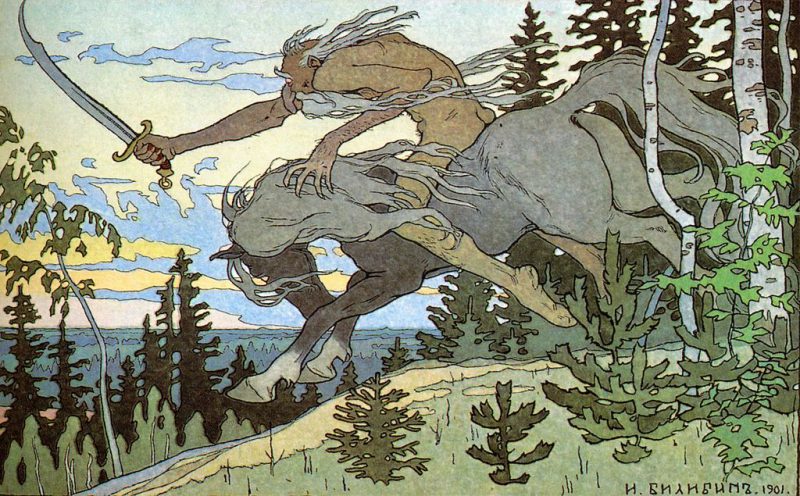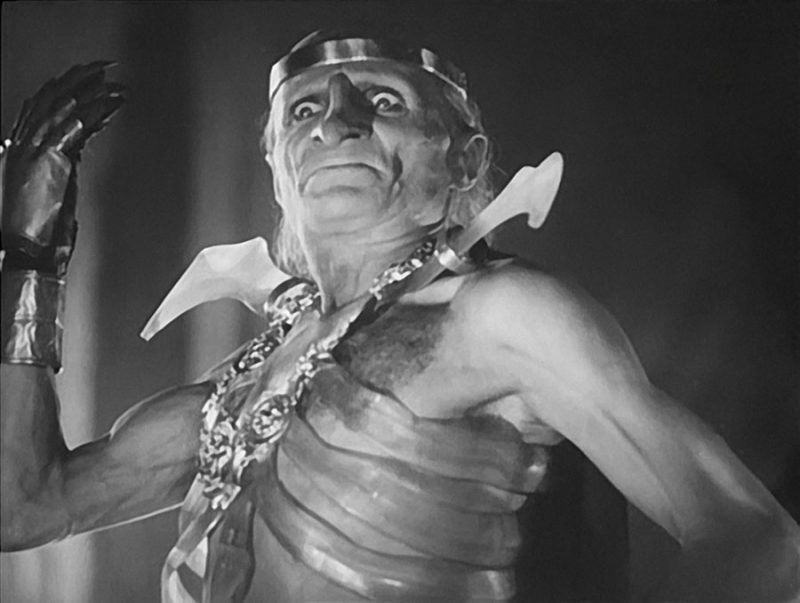Koschei the Immortal – Fear and horror of children’s fairy tales
In one of the previous articles, we told you about the popular negative character of Russian fairy tales, Baba Yaga. Today’s story is about another villain named Koschei the Immortal.

The image of Koschei in fairy tales
Koschei is an evil and powerful magician. In various tales, Koschei turns the whole kingdom in stone, the main character in a nut, and the princess in a snake. He has a habit of turning himself into a crow and is able to lift a sword of five hundred pounds, as well as to fight with the main protagonist all day long and win.
The appearance of Koschei in fairy tales is rather fuzzy, there is usually no detailed description of him, but rather some rare characteristics. Cinema and literature lovers are used to see Koschei in the appearance of a thin old man wearing a dark suit. His skin is so pale and taut that it clearly outlines his skull and eye sockets. His face is decorated with gloomy eyebrows and a hooked nose. Sometimes he has a long beard – other times he is represented as a skeleton.
Koschei, like Baba Yaga, is a representative of the “other” world, the world of death. The kingdom of Koschei is located very far away. To get there, the main protagonist has to take the longest, most complicated and dangerous route, to overcome numerous obstacles, to turn to various helpers for advice and help, to fight with insidious adversaries, and sometimes even to die and rise. The belonging of Koschei to the “other” world can be also found in a common with Baba-Yaga trait: like her, he discovers the presence of a human in his house by smell.

The most interesting fact about Koschei is that his death is stored in a separate place and hidden in several magical animals and objects embedded in each other: “There is an island on the sea, an oak stands on that island, a chest is buried under that oak tree, a hare is inside the chest, a duck is inside the hare, an egg is inside the duck, and a needle is inside the egg. At the end of that needle is the Koschei’s death.” Koschei himself carefully keeps the secret of his death which makes him invulnerable to enemies. Only the real hero with the help of either magical animals or Baba Yaga, who sometimes acts as the Koschei’s enemy, can find and get the Koschei’s death. Removing the eggs with Koschei’s death from the place where it rests immediately affects his condition: he becomes sick and gets worse and worse with any manipulation.
In the beginning of many tales, we find Koschei as a prisoner, chained and locked either in a tower or a dungeon. Who could capture such a powerful magician? Often, it is the future wife of the main protagonist, who is not a mere mortal herself. She locks Koschei out after he had an bad idea to woo her. In the dungeon, he hangs on twelve chains, burns in a fire, sits in a boiling cauldron, and does not receive any food for many years. Exhausted from hunger and thirst, Koschei does not die but only loses his extraordinary strength. However, after drinking three buckets of water (most often given to him by the main protagonist), he breaks the shackles and gets released from captivity.

The origin of the Koschei the Immortal
There are many rumors and legends about the origin of Koschei, but not a single definitive answer.
According to some researchers, a character named Kashchei can be traced in Russian fairy tales, but only from the 18th century. Some believe that his predecessor was the Slavic god Karachun who personified death and cold. The others say that the Immortal was copied from the German mythical ruler Odin. And the third ones believe that Koschei does not have a specific prototype, and represents him as a sorcerer with magical abilities.
Koschei’s name is another unsolved mystery. Many believe that Koschei translates as “bone” and means a lean, bony person. In other Slavic languages, “Koschei” is the homonym of such words as “skin”, “neck”, and “bones”.
The role of Koschei in fairy tales
The image of Koschei the Immortal is one of the variants of the enemy of the main protagonist without which the test that takes the protagonist to a new stage of his fabulous existence would not happen.
The conflict between the characters always arises because Koschei abducts the protagonist’s bride. Sometimes without any reason, but more often, due to a bad action from the side of the protagonist. For example, he breaks the rule of never entering the premises of a house, a basement or a storeroom. Failure to comply with this prohibition leads to Koschei’s release from the enclosed space, after which he forcibly seizes the heroine and takes her to his kingdom.

In different tale, Koschei’s captives are divided mainly into two types. Some of them humble themselves and become his wives, although they do not love him and seek to free themselves from this bond when the protagonist appears as a savior. Others hold themselves independently of their captor and boldly reject his harassment. They perceive marriage with Koschei as death, and even worse than death.
Based on a comparison of the Russian fairy tales with international ethnographic material, the researchers came to the conclusion that the image of Koschei the Kidnapper, like Baba Yaga, goes back to the figure of the initiator in the system of archaic marriage initiation rites. The fairy-tale heroine, a bride or a young wife, “is being initiated” Koschei’s kingdom, and only after that she returns to her human fiancé or husband. In initiation ceremonies, the figure of the initiator, the fact of the initiates being taken out of the familiar environment, and the state of the initiates in this process were associated with a set of ideas about death, more precisely, temporary death. Hence, the image of Koschei the Immortal is clearly associated with the idea of death, both real and symbolic: the heroine bride is isolated in his kingdom, a kingdom of the “other” world type, that is, the world of death.
The loss of understanding the meaning of certain rites with time led to a change in the assessment of the image of the initiator (Koschei). In the fairy-tale reality, he received a new perspective and, undoubtedly, began to be perceived as a dark and hostile to human power, as a dangerous demonic creature.






